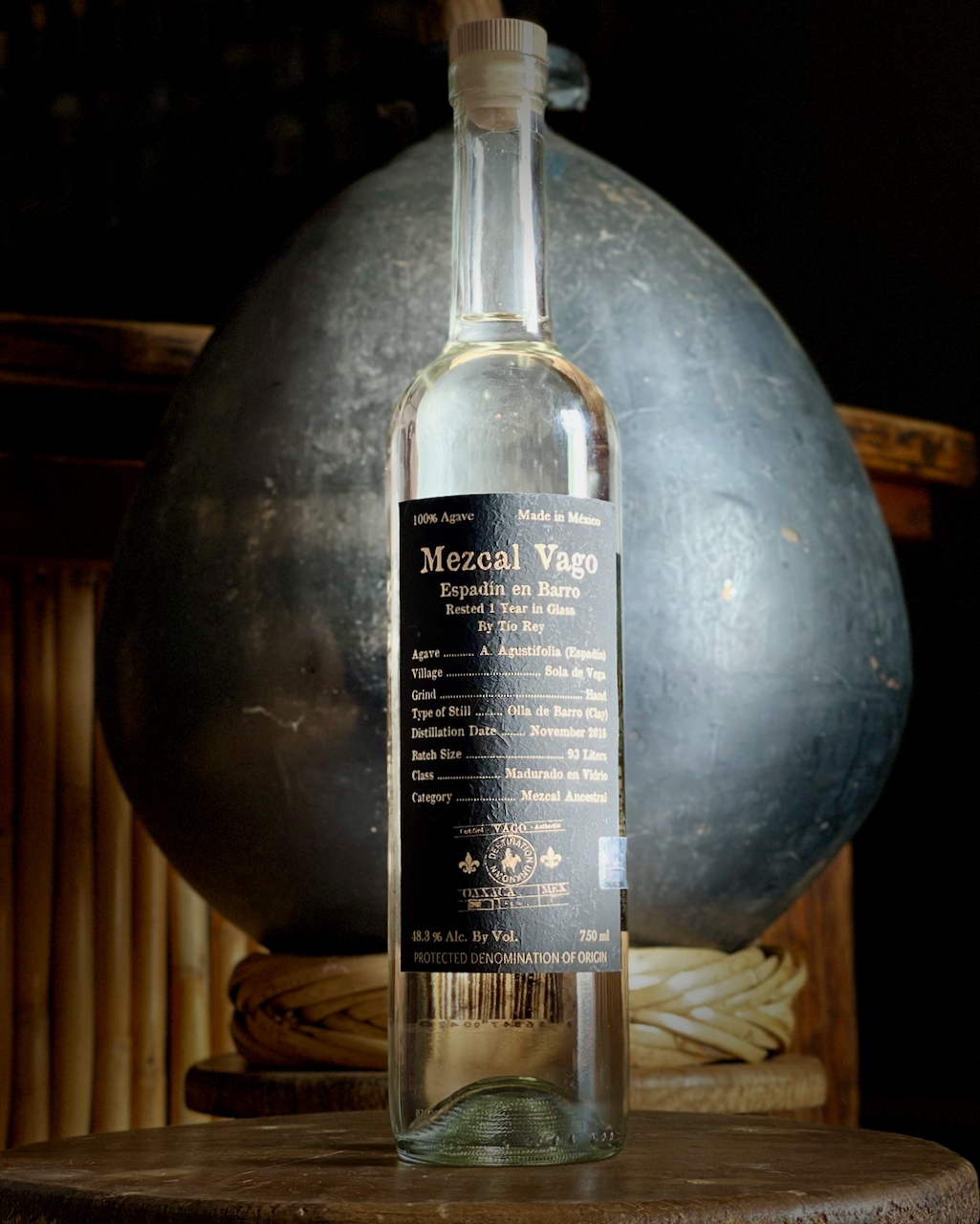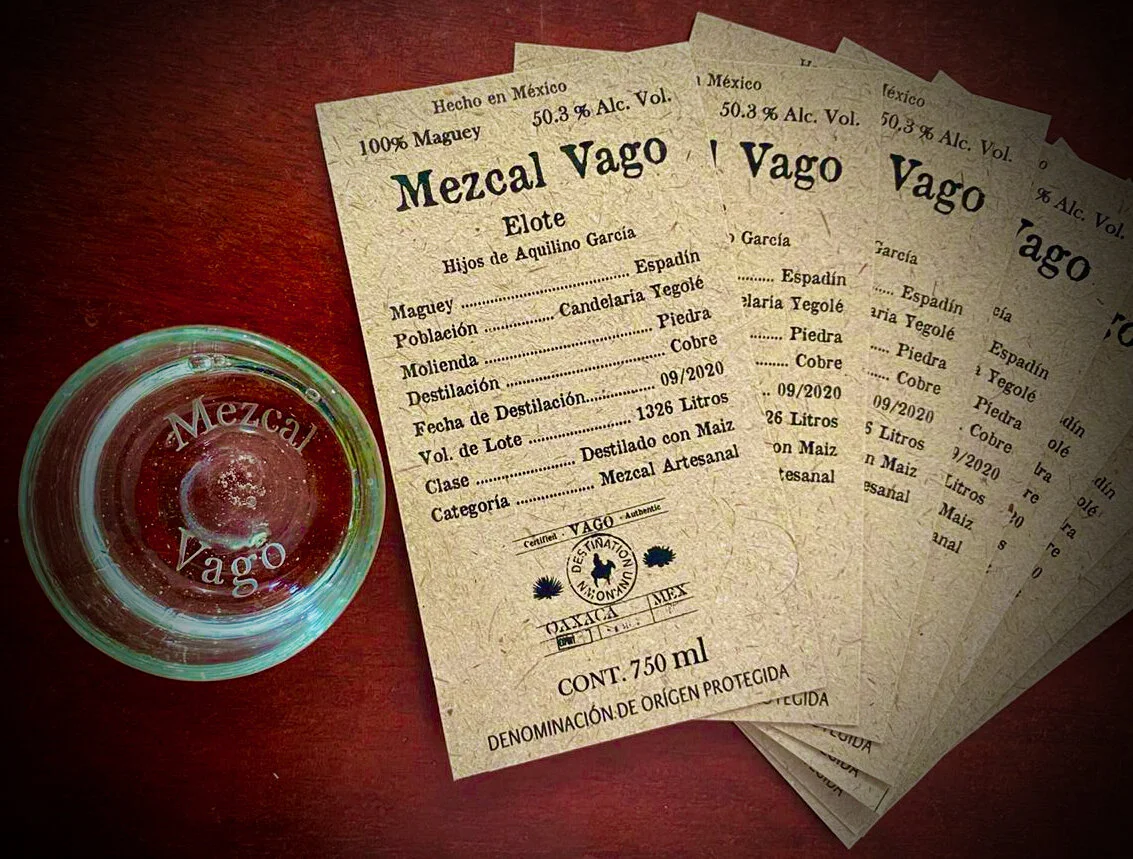Colorado Special Release #2 J-02-TTOB-20
*Spcial thanks for the photo to our friends at American Elm Denver!
Our latest special release is something we have patiently been waiting for the last few years! Those that follow Mezcal Vago likely know that we have been working with maestro Joel Barriga for a while now, bottling the 100% Espadín he and his son Adán produce in the village of Hacienda Tapanala, hidden in the Oaxacan Sierra Madre del Sur. Over this time we have had several conversations with them about producing other expressions to complement their Espadín and showcase the skill of the father-son team. Well, 2020 is the year! We are very proud to announce our second Colorado-exclusive release is a wonderful ensamble of Tepeztate and Tobalá produced in January of 2020!
Joel and Andán harvested this blend of 60 Tepeztate piñas (2,000 kg), and 50 Tobalá piñas (1,000 kg) on February 19th from the El Rincon predio near their home atop the high mesas of the sierra. They were roasted in an underground earthen pit from February 20th - 24th. The roasted, tahona-crushed agave were blended with fresh spring water to produce 4,235 liters of tepache, which were then distilled in 250-liter copper pots to produce 640 liters of ordinario at 30.80% ABV. The ordinario was then distilled a second time on March 24th, producing 173 liters of still-strength mezcal at 64% ABV. The mezcal was adjusted to bottling proof with 43 liters of distilled spring water, for a final batch of 214 liters of mezcal at 51.26% ABV.
Going forward, we will continue to periodically release new batches of different ensambles from Joel and Adán, which will be released on a wider scale. However, for this inaugural batch, we are excited to share it with our friends in Colorado, which being where Dylan and Judah got their start, has always supported what we do at Vago.
You can find a list of retailers carrying this special release here.
Agave Tepeztate
Known variously as du-cual (Zapotec), pitzomel (Nahuatl), de caballo, curandero, becuelo, and others, Agave Tepeztate (a. Marmorata) are some of the most prized agave for producing mezcal. Renowned for their unique appearance and delicate flavors, these agave produce some of the most floral and readily identifiable mezcals. Often growing directly out of rock cliff faces, like Tobalá these agave have a propensity for growing in very difficult and inaccessible locations, making harvesting these unwieldy behemoths notoriously difficult. At the upper end of the spectrum, these agave can weigh around 200 kg, or 450 pounds at the time of harvest! The aromatic high tones to these mezcals can be partially attributed to their lower starch content compared to varieties like Espadín and Coyote. When approaching maturity these agave will often absorb more water than most, further diluting their starch content, reducing the mezcalero's yield, and elevating the floral qualities and light finish of these prized mezcals. Despite being seemingly delicate in nature, Tepeztate have some of the most complex, long-lasting finishes in the mezcal world; finishes that continue to evolve over a long period.
Aquilino harvesting a large Tepeztate piña.
While some mezcaleros say that Tepeztate can take up to thirty-five years to mature, the tepeztate of Don Emigdio and Don Aquilino typically take between fifteen and twenty years before they are ready to harvest. However, Aquilino has been able to harvest cultivated Tepeztate in as little as seven to ten years. In 2016 Aquilion planted around 450 Tepeztate plants, with an eye to plant even more in 2017. The distribution of Tepeztate is represented by the green shading in the map below.
*Image taken from CONABIO website
Agave Tobalá
Agave Potatorum, or Tobalá are some of the most prized mezcal agaves in existence. Their small, basketball-sized pinas have a very high starch content and produce very light, sweet & floral mezcales. Unfortunately, the plants scarcity and high demand as well as inability to reproduce clonally have combined to severely threaten the sustainability of this variety.
Young children often scour the rocky slopes under the shade of oak trees to harvest undersized tobalás to bring to mezcaleros knowing they can still fetch top dollar. Their small yield and limited availability combine to drive the price. They are also notoriously difficult to cultivate, adding the labor of wild harvesting into their price. As a result of this increasing scarcity, Mezcal Vago is actively working to remove wild harvested Tobalá from our supply stream. We are also actively planting thousands of Tobalá seeds throughout the year.
These plants look similar to a. Cupreata, with which they share genes, but are comparatively small. Typically, they grow to a diameter of 3 – 4 ft and a meter tall, however they can get substantially bigger. Their leaves are very wide and spade like, with a gray/green color. They range extends between Puebla and Oaxaca at elevations between 4,000 and 7,500 feet, where they grow in pine and scrub oak forests with rocky soil, typically beneath the shade of large trees. The natural range of Tobalá can be seen in the map below.
*Image taken from CONABIO website
Producer: Joel & Adán Barriga
Joel Barriga is a third-generation distiller, who currently produces with his son, Adán. Their process starts with the harvesting of agave near their ranch in Rancho Tapanala
Primarily working with Espadín, he roasts the agave in one of his either 3,000 kilogram or 5,000 kilogram oven using a variety of local hardwoods. The roast in the smaller oven can take as long as three days and the larger as long as four. These roasts are slightly shorter than Aquilino’s due to the fact that the hornos are much smaller. Once the agave are pulled out of the oven they are slowly cooled in the open air.
Primarily working with Espadín, he roasts the agave in one of his either 3,000 kilogram or 5,000 kilogram oven using a variety of local hardwoods. The roast in the smaller oven can take as long as three days and the larger as long as four. These roasts are slightly shorter than Aquilino’s due to the fact that the hornos are much smaller. Once the agave are pulled out of the oven they are slowly cooled in the open air.
Joel then crushes his agave with a 3½ ton masonry and stone tahona.
Once the agave has been slowly crushed, they are placed into 1,300 liter Sabino wood fermentation vats and left to dry ferment for 2 - 3 days. After that, the fermentation vats are filled with liters of water form a natural spring above the palenque. This is the only thing besides agave that that Don Joel uses for his fermentation. Due to the hot, arid climate, Joel’s fermentation rarely last longer than another 3 - 4 days. After with they are transferred directly one of two adjacent 300 liter copper pot stills.
Once the stills are filled and sealed, they will then undergo first distillation over 3 - 5 hours. First distillate, or ordinario will begin to fall off the still after twenty to thirty minutes at around 55% and continue down to about 20% ABV after two to three hours, producing roughly fifty to fifty-five liters of ordinario. Over the course of the next hour, distillation will continue, but these last ten to fifteen liters are separated out to be redistilled with the next batch of tepache, as they lack sufficient flavor. Once the entire batch of tepache has undergone primary distillation, it is then returned to the still for the resacado, or second distillation. This second distillation will produce roughly two to five liters of heads, or puntas, which begin to fall at about 75% ABV and contain undesirable compounds such as methanol. After the first few liters of puntas begin to fall the heart, or cuerpo, which is what we as consumers see in the bottle as mezcal. This begins at around 65% ABV and continues down to about 38% ABV. After then begins to fall the tails, or colas, which contain lower alcohols as well as greater esters and acids.
Because we make relatively narrow cuts and remove a large portion of colas, we are able to use a small part of these to mix 1:4 with distilled water and use that to bring our mezcales down to bottling proof.
Location: Tapanala
Don Joel Barriga produces his mezcal at his ranch in Tapanla, Oaxaca (16°32'19.7"N 96°13'49.1"W). The ranch lies atop the high plateaus of the Sierra Sur, with rolling hills situated among rising peaks. Their palenque is about 9 kilometers from Aquilino’s as the crow flies and about 300 meters higher. The climate is arid high desert and very similar to that surrounding Aquilino’s.















